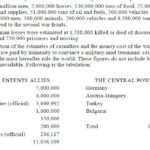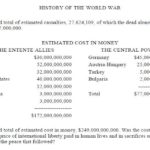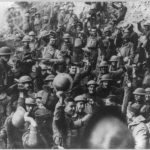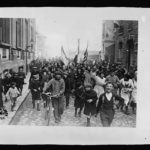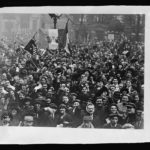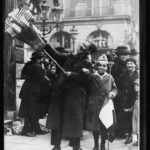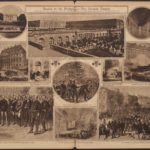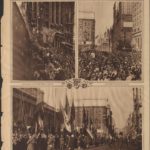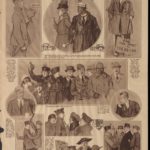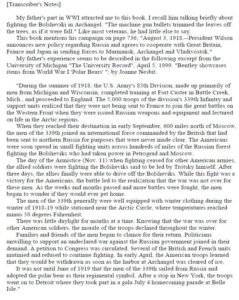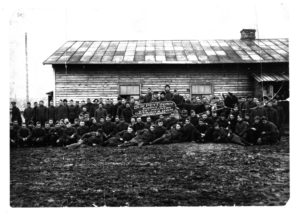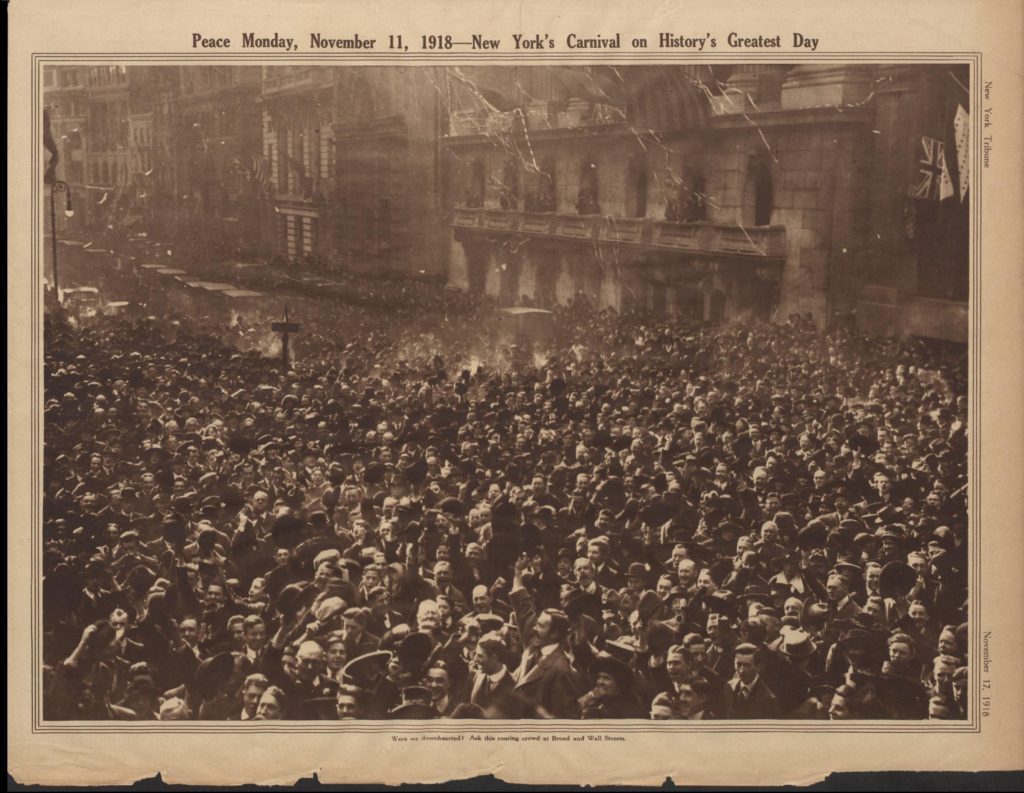According to History of the World War, by Francis A. March and Richard J. Beamish (1919), American commanders ordered their troops to remain all business the morning before the firing ceased on the Western Front.
The last action of the war for the Americans followed immediately on the heels of the battle of Sedan. It was the taking of the town of Stenay. The engagement was deliberately planned by the Americans as a sort of battle celebration of the end of the war. The order fixing eleven o’clock as the time for the conclusion of hostilities, had been sent from end to end of the American lines. Its text follows:
1. You are informed that hostilities will cease along the whole front at 11 o’clock A.M., November 11, 1918, Paris time.
2. No Allied troops will pass the line reached by them at that hour in date until further orders.
3. Division commanders will immediately sketch the location of their line. Thissketch will be returned to headquarters by the courier bearing these orders.
4. All communication with the enemy, both before and after the termination of hostilities, is absolutely forbidden. In case of violation of this order severest disciplinary measures will be immediately taken. Any officer offending will be sent to headquarters
under guard.
5. Every emphasis will be laid on the fact that the arrangement is an armistice only and not a peace.
6. There must not be the slightest relaxation of vigilance. Troops must be prepared at any moment for further operations.
7. Special steps will be taken by all commanders to insure strictest discipline and that all troops be held in readiness fully prepared for any eventuality.
8. Division and brigade commanders will personally communicate these orders to all organizations.
Signal corps wires, telephones and runners were used in carrying the orders and so well did the big machine work that even patrol commanders had received the orders well in advance of the hour. Apparently the Germans also had been equally diligent in getting the orders to the front line. Notwithstanding the hard fighting they did Sunday to hold back the Americans, the Germans were able to bring the firing to an abrupt end at the scheduled hour.
____________________________
The staff and field officers of the American army were disposed early in the day to approach the hour of eleven with lessened activity. The day began with less firing and doubtless the fighting would have ended according to plan, had there not been a sharp resumption on the part of German batteries. The Americans looked upon this as wantonly useless. It was then that orders were sent to the battery commanders for increased fire.
Although there was no reason for it, German ruthlessness was still rampant Sunday, stirring the American artillery in the region of Dun-sur-Meuse and Mouzay to greater activity. Six hundred aged men and women and children were in Mouzay when the Germans attacked it with gas. There was only a small detachment of American troops there and the town no longer was of strategical value. However, it was made the direct target of shells filled with phosgene. Every street reeked with gas.
Poorly clad and showing plainly evidences of malnutrition, the inhabitants crowded about the Americans, kissing their hands and hailing them as deliverers. They declared they had had no meat for six weeks. They virtually had been prisoners of war for four years and were overwhelmed with joy when they learned that an armistice was probable. …
Hostilities along the American front ended with a crash of cannon.The early forenoon had been marked by a falling off in fire all along the line, but an increasing bombardment from the retreating Germans at certain points stimulated the Americans to a quick retort. From their positions north of Stenay to southeast of the town the Americans began to bombard fixed targets. The firing reached a volume at times almost equivalent to a barrage.
Two minutes before eleven o’clock the firing dwindled, the last shells shrieking over No Man’s Land precisely on time.
There was little celebration on the front line, where American routine was scarcely disturbed over the cessation of fighting. In the areas behind the battle zone there were celebrations on all sides. Here and there there were little outbursts of cheering, but even those instances were not on the immediate front.
Many of the French soldiers went about singing.
_____________________________
“Well, I don’t know,” drawled a lieutenant from Texas while the artillery was sending its last challenge to the Germans, “but somehow I can’t help wondering if we have licked them enough.”
The Germans were manifestly so glad over the cessation of hostilities that they could not conceal their pleasure. Prisoners taken at Stenay grinned with satisfaction. Their demeanor was in sharp contrast to that of the American doughboys who took the matter philosophically and went about their appointed tasks.
In the front line it was the same. The Americans were happy, but quiet. They made no demonstrations. The Germans, on the other hand, were in a regular hysteria of joy. They waited only until nightfall to set off every rocket in their possession. In the evening the sky was ablaze with red, green, blue and yellow flares all along the line.
Flags appeared like magic over the shell-torn buildings of Verdun, French and American colors flying side by side. …
Flags were flying in Paris, too:
___________________________________
New York City celebrated:
According to documentation at the Library of Congress, Hugh A. McKenna last American killed in action, but according to Wikipedia:
An American Henry Gunther is generally recognized as the last soldier killed in action in World War I. He was killed 60 seconds before the armistice came into force while charging astonished German troops who were aware the Armistice was nearly upon them. He had been despondent over his recent reduction in rank and was apparently trying to redeem his reputation.
At last .. almost. Not all the fighting was over over there. In the Project Gutenberg preface to History of the World War, by Francis A. March and Richard J. Beamish the transcriber notes that during World War I his father fought “Bolsheviki in Archangel.” On November 11, 1918 the allies way up north, including the 339th Infantry (the father’s unit), were “fighting the Bolsheviks said to be led by Trotsky himself. After three days, the allies finally were able to drive off the Bolsheviks. While this fight was a victory for the Americans, the battle led to the realization that the war was not over for these men.” They spent the winter near the Arctic Circle and didn’t leave Russia for home until June 1919.
You can read the History of the World War, by Francis A. March and Richard J. Beamish at Project Gutenberg. The book definitely takes the American side. It includes the transcriber’s notes and the four cutouts illustrating the great numbers war. The photo of the 339th comes from the Army via Wikipedia. From the Library of Congress: The New York Tribune, November 17th and November 24th; graveyard cross; cheering doughboys (according to Wikipedia, they are part of the 64th Regiment, 7th Division); Marseillaise; November madness; flag vendor and boy.
November 11, 2018 P.M.: I just watched a History Channel program at Youtube. The show’s main point is that there was no reason for the Allied attacks on the morning of November 11, 1918. The troops could have walked unopposed into the contested land right at 11:00 AM. The documentary is based on Eleventh Month, Eleventh Day, Eleventh Hour: Armistice Day, 1918 World War I and Its Violent Climax by Joseph E. Persico. Revenge and last chances for career advancement were motivators. The show, like a Congressional investigation about a year later, is critical of the American high command, none of whom risked their lives during that last six hours. Apparently the doughboys fought for Stenay because the American commander in the vicinity heard that the town had bathing facilities available. So according to the book and program, the November madness wasn’t just people ecstatic that the bloodshed and agony were finally over, it was also the last six hours of hell – on the Western Front in the Great War, the war to end all wars.

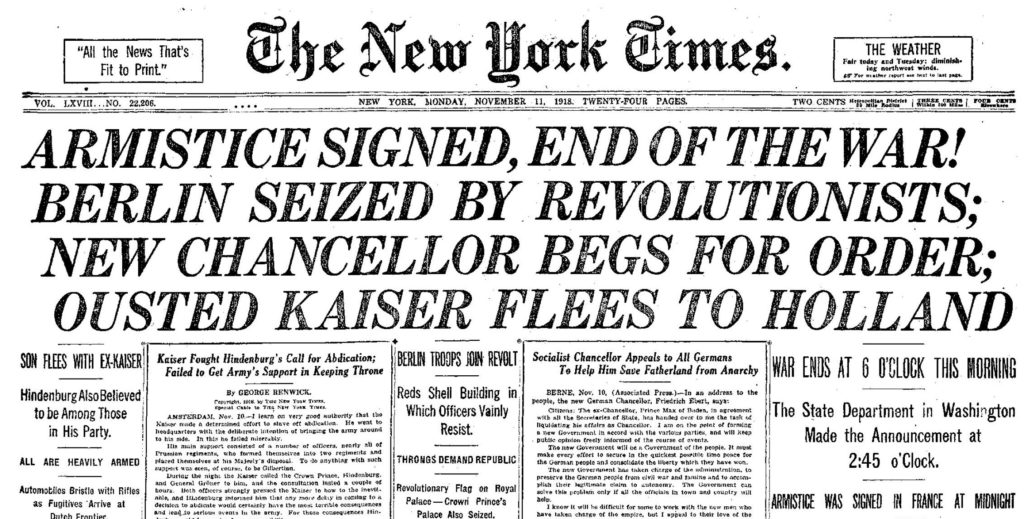

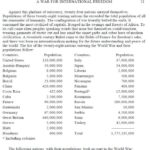
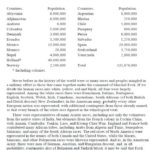
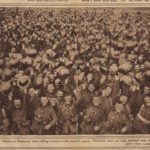
![In Belleau Wood cemetery, France, marble cross marks grave of last American killed in action - Hugh McKenna, killed Armistice day ([New York] [World Wide Photos, Inc.], 9-21-39 [21 September 1939] )LOC: https://www.loc.gov/item/2018646058/)](https://www.bluegrayreview.com/wp-content/uploads/2018/11/55643v-236x300.jpg)
